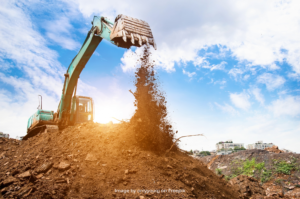 Topography
Topography
Land parcel topography can impact construction costs and the type of construction you can do. Topography is the study of land’s physical features and defines the terrain’s characteristics, including its elevation, slope, and orientation. The orientation and elevation of the land can impact the building’s exposure to sunlight, wind, and water flow. Additionally, topography can aid in identifying current and future environmental impacts of development and construction. Soil and geotechnical studies can also be an important step in the preparation process because they can help determine the ability of the land to support the intended construction, as well as identifying potential issues such as soil instability, high water tables, or potential for liquefaction during an earthquake.
Zoning Laws and Regulations
Each piece of land is assigned a zoning classification which determines what can be built on it. Each zoning type comes with its own set of restrictions, such as height limits, floor area ratios, setback requirements, parking requirements, landscaping, signage, among others. Although zoning classification can be changed if the proposed use does not comply with the current zoning classification, this can be a lengthy and potentially expensive process and the outcome is not guaranteed. Consider asking prospective design, design-build firms if they have experience with zoning regulations and rezoning processes. Finding a firm that can handle this for you will save you the headache of trying to do it on your own, not to mention the time it takes to move through all the red tape in some cities.
Grading
Grading is an important step when preparing a piece of land for construction. The grading of land, also referred to as leveling, relates to its topography in that it is the process of adjusting the slope and elevation of a site’s surface. Grading a piece of land has many benefits including improving drainage, preparing for construction, preventing erosion, or creating a specific landscape design. The grading process is like planning a piece of lumber, it ensures a smooth, even surface for use. Heavy machinery like bulldozers and excavators are often used for large-scale projects, while smaller projects might only require simple hand tools.
Additional Unexpected Fees
There are several additional fees that may pop up when selecting and preparing land for construction. This includes but is not limited to drainage and erosion control, land clearing, insurance, and modifications necessary to ensure accessibility. If the construction site is not easily accessible, it may be more expensive to get materials and equipment to the site and can significantly impact the feasibility of the project.
 Shape and Size
Shape and Size
When securing land for a construction project one must make sure that the land is big enough for the current plans and any additional future expansions. Not only does the square footage have to be sufficient, but the shape of the land must be conducive to building on.
Price
Arguably the most obvious consideration while in the land selection for construction step is ensuring that the land and the necessary preparations are within your price range. This includes considering the total cost, including the price of the land, building costs, and potential hidden costs like legal fees, permits, and utility connection costs. The price should be within your budget and should be competitive with the local market.
Location
Just like when buying a house, one must consider “location, location, location”. The plot’s location is crucial. Consider factors like proximity to important amenities (such as schools, hospitals, transportation), the neighborhood, and other infrastructure. This is important in both residential and commercial construction. One is unlikely to want a car dealership or a big box store in the middle of a bland stretch of highway.
Conclusion
All of these steps are necessary to conduct the process of “due diligence” during land selection. It’s the process of thoroughly checking all aspects related to the land before you commit to buying or starting a project. When this is done properly, construction projects can run smoothly and successfully, with little to no surprises or setbacks. Remember that due diligence can take time and resources, but it’s an essential step to mitigate potential risks and avoid costly mistakes. Remember that whether the land you are looking for is for commercial or residential use, it is always a good idea to consult a professional. An experienced engineer or surveyor can assess the land’s suitability for building, taking into account the grading and other factors. The next time your development requires land selection, think back to these handy tips and maybe it’ll save you some time and capital.






